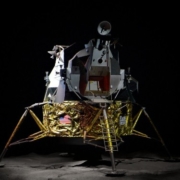Agile
- The Boy Scout Software Development Principle by Thomas Hansen — Short, simple, to the point, and a great mentality to have when building software.
- The 20%: A Collection of Interviews by Lauren Hempen— Interviews with four women where they discuss their careers, challenges, successes, and advice related to being a woman in the software development industry.
- Hanlon’s Razor: How to Be Less Judgemental and Build Better Relationships by Vinita Bansal — Interesting explanation of a shortcoming we are all subject to—preemptively judging others. This article serves as a reminder to judge less and listen more.
- My Journey From Israeli Military Intelligence to VP of R&D: 7 Secrets Learned by Dan Lines— Dan Lines’ articles are always engaging and personal—this one, especially. This interview with Nadav Lev reveals all the secrets to getting promoted and building "elite dev teams."
AI
- OpenAI GPT-3: How It Works and Why It Matters by Dana Kozubska — GPT-3 has many strengths, but it also has some weaknesses. Explore why it matters and how to use it to write code, design an app, and compose music.
- How to Build Your Own Chatbot With Dialogflow by Jay Hogan — Stop thinking about that chatbot and actually build it. Jay Hogan created a step-by-step instruction on how to build a chatbot using Dialogflow.
- Top 5 Open-Source and Commercial RPA Tools to Use in 2020 by Sindhu Priya D —Find out the top 5 RPA tools and learn more about what RPA is.
- Running Machine Learning Applications on Docker by Emrah Mete —One Core member’s example of how to transfer a machine learning model to the living environment in the fastest and most effective way of using container infrastructures.
Big Data
- Apache Kafka in the Gaming Industry — Use Cases + Architectures by Kai Wähner — This blog post explores how event streaming with Apache Kafka provides a scalable, reliable, and efficient infrastructure to make gamers happy and Gaming companies successful.
- Design a Real-Time ETA Prediction System Using Kafka, DynamoDB, and Rockset by Kartik Khare — See how to design a real-time ETA prediction system using Kafka, DynamoDB, and Rockset.
- Processing Large Messages With Apache Kafka by Kai Wähner — Kafka wasn’t built for large messages, but files and payloads keep getting bigger. This article covers use cases, architectures, and trade-offs with Kafka.
- Looking Under the Hood of Apache Pulsar: How Good Is the Code? by Akansha Yadav — Ever wondered what’s under the hood of some well-known open-source software?
Cloud
- Event-Driven Architectures by Ravi Purohit: A brief yet meaningful explanation of event-driven architecture and what makes it so valuable for cloud and microservices applications.
- AWS vs Cloud vs Azure: Which Does Fit In? by Ivan Shulak: The battle of the cloud vendor heavyweights never seems to stop. Here’s another take on what benefits you should look for in each.
Database
- Moving Toward Smarter Data: Graph Databases and Machine Learning by Frank Eaves — A brief overview of database solutions, an introduction to using machine learning and graph databases, and real-world use cases for putting context back into your data.
- Database Architectures and Use Cases – Explained by Margo McCabe — This article provides an overview on database architectures, including use cases and pros and cons for each of them.
- MySQL Workbench vs DVConvert — Migrate From SQL Server to MySQL by Dmitry Narizhnykh — Migration databases is not easy. In this article, one of our Core members compares two various tools for migrating from SQL Server to MySQL.
- Apache Kafka Is Not For Event Sourcing by Jesper Hammarbäck — Apache Kafka is great for delivering messages, but if you’re using it for event sourcing, think again. Learn about why Kafka isn’t suitable for event sourcing.
DevOps
- Top 20 Git Commands With Examples by Sahiti Kappagantula — This is one of our top articles of ALL TIME! It is a simple description of the Git commands you’ll need when working with Git, what they do, and how to format them.
- To Automate, or Not to Automate? That is the Question by Simon Knight — This article contains some guidelines to help decide which and whether or not to automate tests in pursuit of a continuous testing outcome. It is thorough and well-written. A great example of a good DZone article.
- The Key to Continuous Testing in DevOps by Maria Homann — In this article we take a look at continuous testing to understand why it plays a key role in DevOps, and why test automation is essential in enabling continuity.
Integration
- Mulesoft 4: Continuous Delivery/Deployment With Maven by Ashok S — This article is a great example of what we want every tutorial to look like on DZone. The main aim of this article is to provide a standard mechanism to release project artifacts and deploy to Anypoint Platform, from the local machine or configure in continuous delivery pipelines.
- Integration With Social Media Platforms Series (Part 1) by Sravan Lingam — This article helps you to build a RESTful API through MuleSoft that integrates with LinkedIn and shares a post on behalf of one’s personal account. I like this article because, in the age of social media, it’s so important for businesses to be connected and integrated!
IoT
- Shaking Down the Raspberry Pi High-Quality Camera by Jeremy Morgan — This Core member tries out the new Raspberry Pi HQ Camera with full instructions so you can replicate his results. Here’s how you can put the new Raspberry Pi HQ camera to work right away!
- Best Raspberry Pi IDEs by Moe Long — From Geanny and Greenfoot to Thonny and Adafruit WebIDE, these are the best Raspberry Pi IDEs for all languages!
- IoT Security: Issues and Ways to Overcome It by Eugenia Kuzmenko — Learn how to make your IoT device and cloud infrastructure secure and see why is it important.
- Raspberry Pi Emulation With Docker Compose by Sudip Sengupta — This guide, by one of our Core members, discusses everything needed to build a simple, scalable, and fully binary compatible Raspberry Pi cluster using QEMU, Docker, Docker Compose, and Ansible.
Java
- 42: The Answer To Life, The Universe and Everything by Karl Heinz Marbaise: A cool and engaging article that demonstrates the learning opportunities that diving into a niche topic can have. (Plus the title’s pretty hard to beat.)
- The Silent Villains of the Coding Universe: A Review of Anti-Patterns by Akansha Yadav: There are so many articles online that discuss anti-patterns but few that really do it well. Akansha’s is one of them. Whether you’re a beginner or a seasoned developer, there’s content here that you can come back to again and again.
Microservices
- Distributed Saga and Resiliency of Microservices by Binildas Christudas: Ah, the Saga pattern. Take a look at how this distributed pattern strengthens microservices with a travel-based sample application.
Open Source
- Virtual Conference [Comic] – Daniel Stori — As more and more virtual conferences are coming up, Daniel Stori’s comic perfectly captures 2020.
- Top 5 Free and Open Source Game Engines You Should Try — A unique and fun addition to the Open Source zone, highlighting the advantages of open-source game engines vs. proprietary gaming software.
- Open Source Tool Options in Web Application Development — Helpful resources to which open-source tools might help you on your web application projects.
Performance
- What Is Big O Notation? by Huyen Pham — Aside from a silly name, this article is an example of an in-depth analysis on a little-spoken-about concept. In this article, take a look at a short guide to get to know Big O Notation and its usages.
- Is Python the Future of Programming? by Shormisthsa Chatterjee — Where is programming going? This article attempts to answer this question in a well-rounded way. The author writes, "Python will be the language of the future. Testers will have to upgrade their skills and learn these languages to tame the AI and ML tools".
Security
- JSON Web Token: How to Secure a Spring Boot REST API by Yogesh Mali: Security, Java, and integration intersect in this article abou
Web Dev
- A Better Way to Learn Python by Manas Dash: There’s so many resources available for learning Python — so many that it’s difficult to find a good and flexible place to start. Check out Manas’ curated list of courses, articles, projects, etc. to get your Python journey started today.
- Discovering Rust by Joaquin Caro: I’m a sucker for good Rust content, as there’s still so many gaps in what’s available. Joaquin does a great job of giving readers his perspective of the language’s features in a way that traditional docs just










